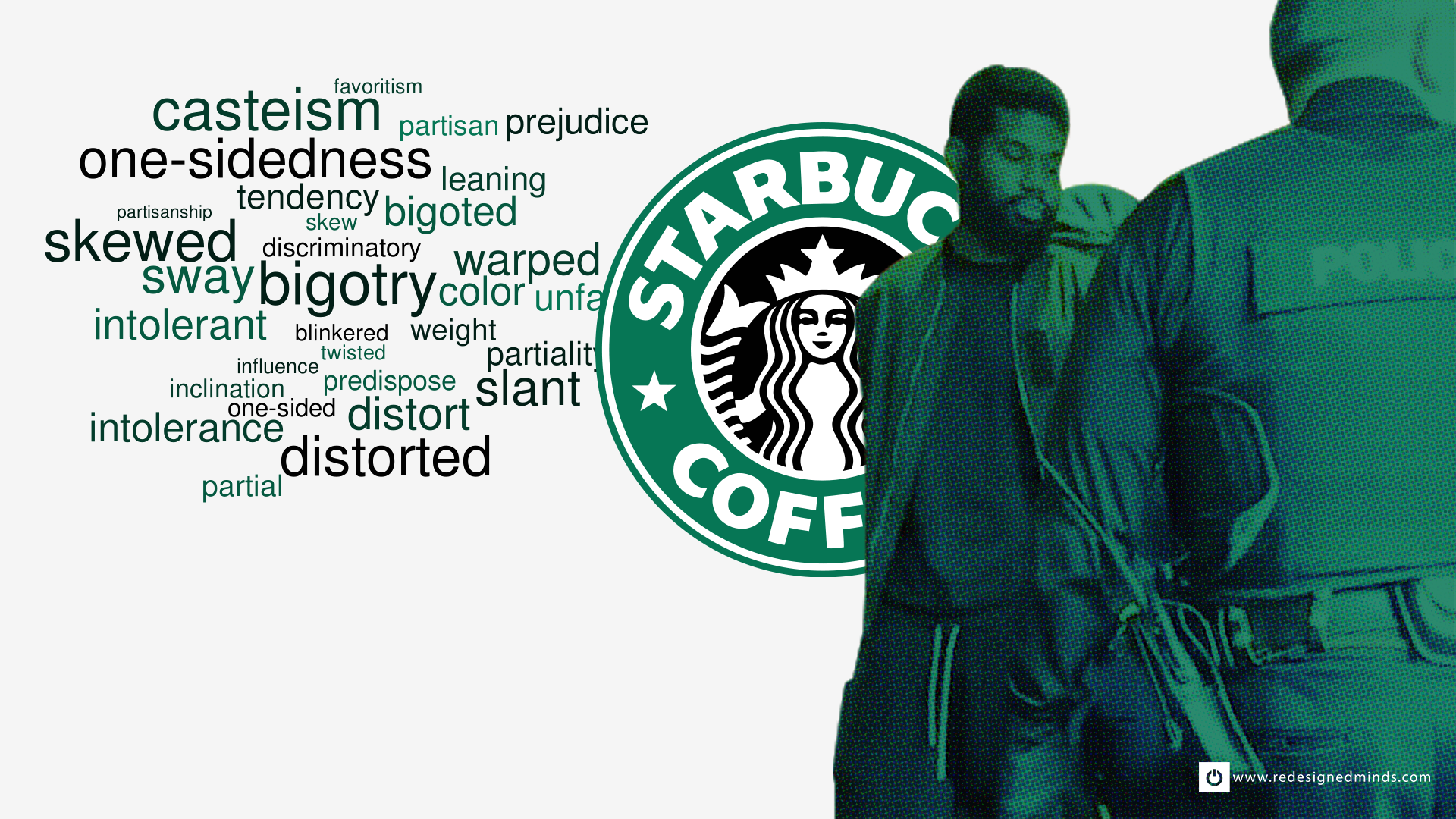Starbucks! Can you train bias out of people?
Anti-bias, Culture, HR
The arrests of two men waiting in Philadelphia Starbucks store left us shocked. Many questions sprang up, for example: What was the impetus to this showdown? How could this happen? Why? Was it bias? Was it poor or omitted training? Did the two African American gentlemen ruffle the feathers in any way, shape, or form?
When the failure of service happens, why does the training department quickly get the blame? Did training provide inadequate learning experiences and access to information? Or wrong scenarios?
Training is not the answer to everything. No course will single-handedly achieve bias change. But we could say training will be designed to contribute observably to that change, and likely have non-training components as well. It’s never the training alone; it’s the people, the culture – these non-training factors of the performance management system that bear on whether training-produced skills get used to improve individual and business performance.
The situation at Starbucks was nothing short of systemic racial bias veneered into our culture. It’s a no-brainer that the employees at Starbucks are trained to call police in certain situations such as those involving threats or disturbance, but none of these was the case. It was inappropriate to engage the police, a fact known to the store manager at the time.
Enter: Bias Training in Corporate. Bias is very much alive and well, and it refers to the stereotypes, both negative and positive, that exist in our subconscious and affects our behavior. In 2013 Google launched a key initiative of 60,000 employees across the world undergoing bias training lasting 60 to 90 minutes under instructors who had taken some 12 hours of training.
Starbucks proceeded to close all 8,000+ company-operated stores for an in-depth 4-hour training session on May 29, 2018, armed with a well-blended curriculum for 175,000 Starbucks partners across the country. This initiative was a diffuse responsibility of many people and organizations, using varied resources, namely;
– Team guidebooks
– Reiteration of mission and values
– Messages from Founder, CEO, board members, prominent activist and filmmaker
– Perception expert insights
– Commitment to long-term structural rework
– Inspiration partner stories, learning, problem-solving
– Film on the reality of racial discrimination and civil rights movement
– Recommitments to policy, guidelines. leadership
– My notebook activity
Starbucks acknowledged that the 5/29 training event was a start that would lead into weeks, months, years of training as they sought to understand all facets of what makes us human, our abilities, ethnicities, genders, class, language, citizenship, political views, religious affiliations, and more.
From a training point of view, we do know few performance problems are caused purely by lack of knowledge or skills. Training is rarely a complete solution, and most research on HRD shows that the typical organizational training programs achieve on average about a 10% success rate that reveals training contributing to the organization and personal performance.
That means for every 100 employees who participate in training programs, about 10 of them will change their job performance in any sustained and worthwhile way. No organization is going to be satisfied having 90% of their training resources go to waste. A new approach is needed where learning, engagement, and critical conversations continue in a sustained fashion.
Stemming from this Starbucks fiasco, expect bias training to hit companies all across the U.S. as people scramble to patch the bias hole. A patch solution will not work but rather a long and protracted training strategy. One tied to formal policies, procedures, and practices within organizations to ensure inclusivity.
Organizations that are serious about achieving better results from training not only must work to improve the quality and convenience of training (or to reduce the costs of ineffective training by putting it all into online formats) but must find other innovative ways to change employee attitudes, biases, and behaviors, to avoid what happened at Starbucks.
Do you need help developing anti-bias training?
Contact me for support!



Leave a Reply
Want to join the discussion?Feel free to contribute!